What’s Wrong With This Picture?
This is my 200th blog posting!
I started this site as part of a university class project. It seems an appropriate time to review how I have gotten this far.
I have not adopted all the options of Web logging, better known as blogging, technology. Actually, I chose to ignore and even outright reject some of them. I guess I’ve just become that old dog, hesitant to learn the new tricks.
I’m a news junkie and am powerless over my addiction.
I started as a storyteller who eventually gravitated to print. The first time I saw my name in print was in the Rosendale Elementary School, Niskayuna, N.Y., June 1959, newsletter.
Mrs. Breymaier’s 2nd Grade
TEXAS, HERE I COME
My family and I are moving to Amarillo, Texas Airforce Base soon. We have some booklets about Amarillo and places near it. We read sometimes at supper time. Amarillo is a large city. Nearby are oil wells. Twenty five miles away from the city is a canyon. They have a rodeo each year. I’m looking forward to seeing it next year. I am sorry I have to leave Schenectady, but I’m sure I will have a good time in Texas.
Mark Bralley
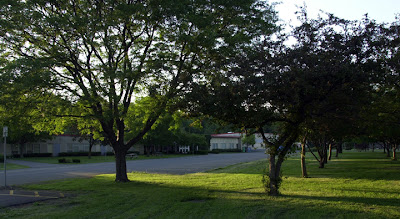
This is the school in 2001. In 1959, I helped plant these trees with my Cub Scout Pack.
Probably, little has changed, in either my writing style or journalistic philosophy. It has matured a little with my increased vocabulary and education. However, in spite of that, I’m sure I still need an editor.
I wasn’t initially hooked. In Amarillo, I got newsprint all over my hands by flinging the Air Force Times on doorsteps all over base housing. There must be something about the absorption of newsprint ink through skin contact. Several of my media colleagues have expressed similar beginnings, as newspaper delivery entrepreneurs.
I have usually worked within the smaller recesses of the print medium.
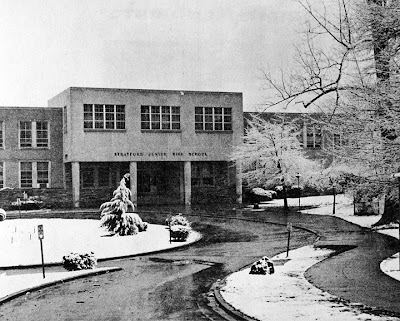
I was in the eighth grade when I started as a Stratford Jr. High School newspaper and yearbook photographer. This was my introductory photograph in the 1965 yearbook the Cavalier.
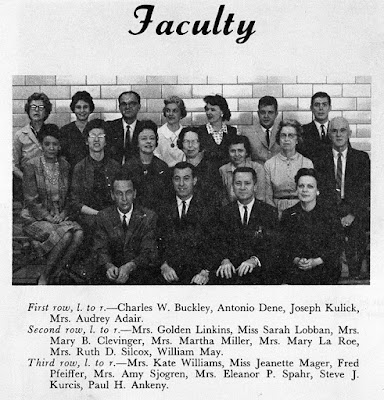
My first Journalism teacher was Mrs. Ruth Silcox, second from the right, in the middle row of this 1965 yearbook photo. It was simple enough; the old who, what, when, where and how. She oversaw the publications and let the students make them work. I never sensed that she was controlling or engaged in censorship. It wasn’t her style and though I’m sure she did censor us a bit, her control went unnoticed. She instilled professionalism from the start. My other mentor of the mid 1960’s was an adult Boy Scout leader, National Geographic Society’s Director of Photography Bob Gilka. He was my merit badge counselor for photography and citizenship in the community. Little did I know how much influence he would have on my life’s work.
I found that the local newspaper was always looking for anything the editor could justify as news, to fill the white space that became a newspaper day after day, every day.
I now marvel at the simplicity of my entrée to a community newspaper, The Northern Virginia Sun, in Arlington, Va. It started with two-inch box scores from local Jr. High basketball games.
I learned valuable lessons from this. Anything can be news and everything is news to some people. The participants, fellow-students, and parents of those basketball players, all wanted the information. Though, by today’s standards, the idea that a small daily paper would print junior high sports scores is rare. It was equally surprising that they printed a student taken photo of the county junior high school champion football team and ran it across more than half a page of the sports section. What it taught me was that it was about an acceptable level of work.
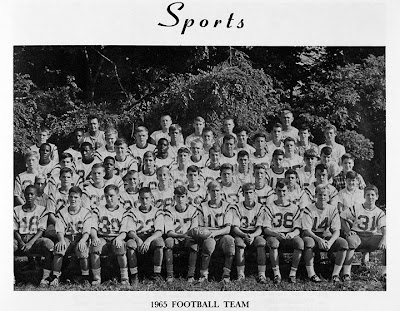
The team picture was also used in the school's yearbook.
Over the years, I have seldom pursued the “Big Story,” favoring instead to show, photographically, the every-man story. Yet, it has always been about showing others my world, through how I photograph it.
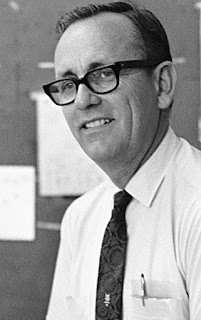
After arriving in Albuquerque in 1966, I went on to regularly be published in the Highland High School newspaper, the Highlight and yearbook, the Hornet. My yearbook sponsor was Bill Manier, right. He provided significant support and encouragement. My Journalism class teacher and newspaper sponsor was Betty Chowning.
I also freelanced for the Journal, Tribune and the wire services: Associated Press and United Press International. I wasn’t given assignments; I just threw pictures of news or sporting events on editors’ desks and asked if they wanted to use them. Seldom was I rejected and when I was, it usually was because some major news event dominated that day’s paper.
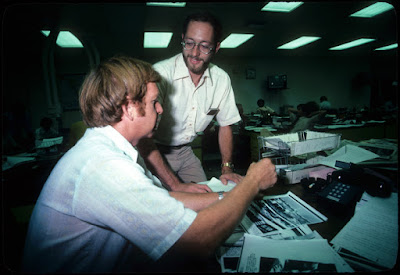
I was not very comfortable with the daily newspaper’s deadline requirements and never pursued employment with the Journal or Tribune. However, I had a love-hate relationship with the Journal. I had a highly competitive association with lead photographer, Ray Cary, center, here with photographer Greg Sorber, who is now the assistant photo editor. I had routinely beaten Cary in press award competitions. Cary told me the day I took this photograph in 1978, it was good I found a career in law enforcement, because though I was a great photographer, I had no people skills and that was why he had never hired me. My response was direct, rude and proof positive he was right; that at least with him, I had no people skills.
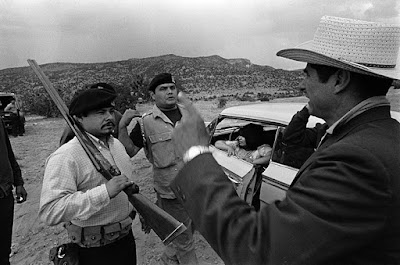
I photographed land grant leader Reies Lopez Tijerina, right, for eight days in June 1969, which ended in his arrest for assaulting Federal Forest Service Law Enforcement Officer James Evans. This picture was published in the Dec. 15, 1969, issue of Newsweek magazine.
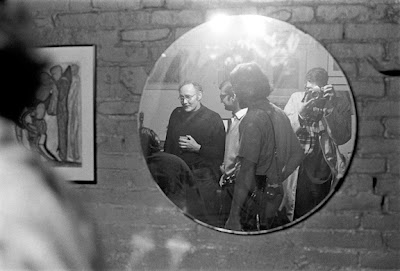
I attended New York Institute of Photography in New York City during the fall of 1969. I took a photojournalism workshop with the former Life magazine photographer W. Eugene Smith, above left.
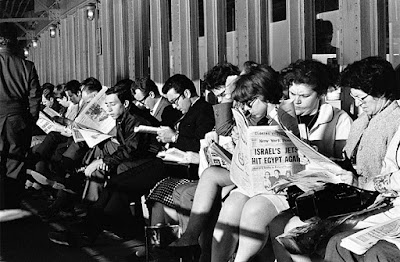
Every day I rode the Staten Island Ferry, above, with newspaper readers to Manhattan, below. The New York skyline of lower Manhattan included the World Trade Center under construction, left, the building with cranes on top of it.

I became a regularly employed photographer for the Albuquerque News. I went on to expand into larger media. I learned radio news, film for television news, shot stills for magazines and became involved with some political campaigns.
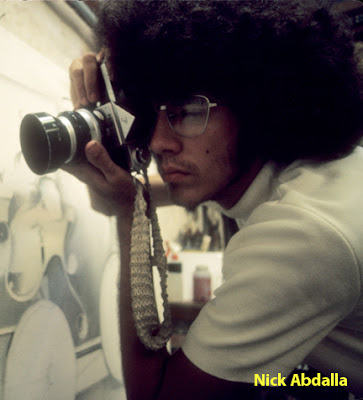
I photographed for a Capitol Hill news agency in Washington, D.C. Then in 1973, I took a sudden career shift into law enforcement. I continued to occasionally photograph. I did public relations and evidentiary photography as a deputy sheriff and police officer.
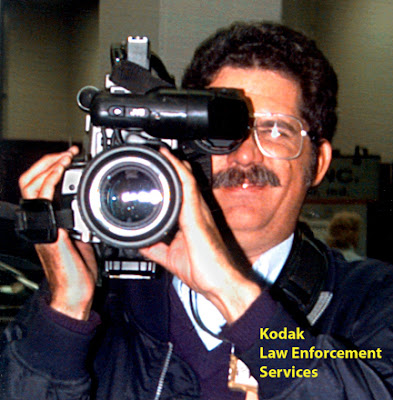
I was assigned to the police department’s video productions unit that brought my journalistic skills to the duties. I videotaped the U.S. Supreme Court’s photographer while collecting stock footage, during a 1993 vacation trip to Washington, D.C.
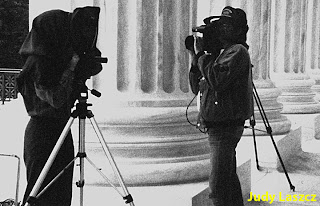
In the mid 1990s, I started to seriously return to journalistic photography, though I did so on the smallest of markets. I also began pamphleteering with “
The Blue Flyer,” my personal thoughts and observations in a pre-Internet age.
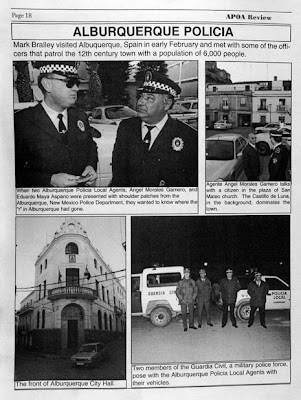
I wrote and photographed for the police union when we started a monthly magazine, APOA Review, and made video packages for a public access cable channel program, APOA Forum.
After retirement, I returned to the university, taking the journalism track. I’ve been learning what I call “new” technology with students who grew up never knowing anything except computers.
So what’s wrong with this picture?
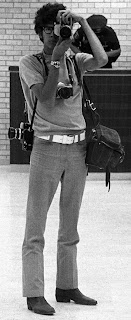
I have a long history with commercial media, albeit from the fringes. However, even through the occasional day-to-day work I’ve had published, I get to sneak a peek at the inner workings of the news industry. I may be on the dull side of the knife’s cutting edge, but I move between the academic and active press corps worlds.
I have reflected on what I have produced in a little less than two years.
I’ve approached this site as if it were a blank sheet of paper. Rather than thinking in terms of blogging, I have chosen my own path. This is different from the many that have developed their own sites, in what might be perceived as some kind of collective standard.
Many want blogs to be short, quick, and easy reads. Some sites are designed to be very interactive. Though I welcome comments and discussions, I seldom generate them.
I started my blog spot with only a few premises:
I have a large archive of photographs; many of which have never been published.
A number of those old photographs can help put today's issues into a historical context.
Topics of current events oftentimes are not new.
Over time, it became apparent that taking a strict journalistic approach seemed to make little sense. The biggest reason is that when I was not always doing original reporting, I was bringing some other viewpoint to the stories. Sometimes I have a particular insight that I think my readers should consider.
Therefore, I divide the entries into multiple parts. Though there are no hard and fast rules. The posting generally follows a pattern of reporting, or fact statement, using the strict journalistic style. I follow with an analysis, then a dose of editorial, and sometimes, under the heading of “My Take,” my personal view of the issue.
Based on my photographs, I often try to introduce my readers to newsmakers.
I follow the cliché of sporting program hawkers. They sell their wares by saying, “you can’t tell the players without a program.”
Through the use of my working portraits, I attempt to bring a flavor of the person and the events I cover. Sometimes I will only use an archived image to introduce a person involved in the blogged issue.

I've found that I post a number of obituaries. They have included: Associated Press photographer Joe Rosenthal who was awarded the 1945 Pulitzer Prize for photography for his picture of Marines raising the American flag on Mount Suribachi, Iwo Jima. Also Albuquerque City Clerk and community activist Emelia “Millie” U. Santillanes, Deputy Chief of Police Jerry T. Powell and former President Gerald R. Ford.
Over the years, I developed some degree of expertise in several different fields including: hot air ballooning and a number of law enforcement skills. Expertise is a perishable skill and I have lost some them through the lack of continued use. However, the knowledge still serves me well.
Based on my experiences, I attempt to bring an informed analysis to, in particular: local and state government, politics, law enforcement and the media.
My site will continue to be photo driven. The web offers me an audience that is much broader than when I first started photographing and I had to show individual prints to one person at a time.
Blogging is a new communications form. There are good and bad things about it. Anyone with access to a computer can play. Some critics complain that blogging is destroying newspapers. Bunk! Bad newspapers are destroying bad newspapers. The immediacy available through blogging seems to be important to younger people these days. For some, it is not the facts, but the interaction that is important. To old dogs, facts still count. There is an ease provided in spreading the message through the Internet. There are good and bad in not having the structure of a newspaper, editors, and colleagues to help shape the direction of one’s work.
My favorite Constitutionalist, James Madison and his public marketplace of ideas, lives on with the Internet. Any blogger may post their ideas and by being out there, any other blogger may challenge those ideas, or agree, or offer some alternative thought. The discussion can be worldwide. Who would have thought I would have readers in Sri Lanka, or Japan, or other far-east countries.
Blogging has its own rewards. More than a couple of state legislators have told me that they had not considered a topic from my perspective and they then looked at an issue differently. How much more can you expect to get than participation in the public discussion?
Several fellow journalists have told me that I have turned them on to follow up on stories I broke.
There are some downsides to blogging. I have had to bill some bloggers who have simply stolen some of my copyrighted photographs and posted them on their site. Many who blog feel that the Internet is just a big free for all. They don’t have the decency to consider other peoples work and lift whole pieces, posting them as their own. It is technically so easy to take work and post it on one’s own site that it is done with impunity. It jazzes up a lot of otherwise boring sites, but it is nothing more than thievery. Just because one gives credit does not absolve them from the infringement of copyright laws. There seems to be an accepted sense that the proper way is to cite and link to the original information. The good bloggers do so; the bums engage in rip-offs.
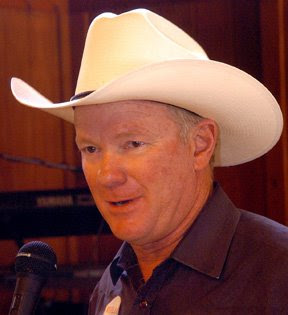
This picture of State Land Commissioner Pat Lyons, during his 2006 reelection campaign, was stolen by an otherwise respected local blogger, who is not alone.
There are the bloggers who write anonymously, either out of fear of being retaliated against because they are whistleblowers or they can’t stand the heat. I can respect those who take such stands. The authors: Alexander Hamilton, James Madison, and John Jay, wrote the Federalist Papers, anonymously under the name Publius.
Then there are the bloggers and more specifically those who write comments anonymously and then are rude or worse, libelous. These folks are cowards. If someone disagrees with some idea on the Internet, they should have the guts to stand up and say, "this is who I am and I disagree," or "You’re full of it and here’s why." However, those anonymous posters who make personal attacks don’t deserve any recognition and most don’t get much attention from me.
There is a blogger, who has poked at me writing as
Sgt Joe Schmedlap’s world. He claims to have been a command officer in the largest New Mexico police department; that would be my old outfit, the Albuquerque Police Department. He further claims, about himself, “I was horribly altered by growing up in the 70's surrounded by cheap Mexican weed and listening to Warren Zevon.” He took a fair amount of umbrage at my
sarcastic and cynical review of an absolutely absurd idea to publish gangsters’ pictures in the local newspapers.
This
anonymous blogger has the audacity to characterize my 27 plus year tenure in law enforcement, “You see, Mr Bralley was never really a ballsy lawman type but he was intellectually stimulating and usually he was on the side of the angels.”
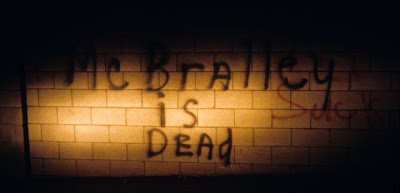
I take exception. Schmedlap came on the scene after my “hair on fire days,” those days when I took on gang members in the West Gate Heights neighborhood, who threatened my life, above. Through my actions, I changed state law, at least twice, and had a controversial search procedure upheld by the state supreme court, that made Schmedlap’s gang fighting days a bit easier. By the time he showed up, I was off to tamer pastures, then into the union smelter, taking on the administration, in spite of who did or did not appreciate me. I was instrumental in crafting the State’s Police Officers’ Bill of Rights, which took more than ten years in three tries before becoming law.
Schmedlap ignores the
obvious, cops are all too human and some of them make mistakes while others cover up for them.
Schmedlap goes on, “I sometimes have heard of someone going native, and on occasion seen a cop or former cop begin to associate with crooks, or start doing dope, maybe even do some brutality that contrary to Mr Bralley’s beliefs is really quite rare (he in fact went back from 15 to 25 years in his history of the incidents he used to make his point, one would think if it were rampant he could come up with something from last month), but for one to truly go native in a really bad sense one would have to become a cop bashing liberal. Mr Bralley has seemingly become just such a person.”
That's the point of this site. I go back to put things in their historic perspective.
He apparently can’t understand what I
wrote. Gone native and become, a “... cop bashing liberal"'? I maybe a lot of things, but Schmedlap you need to stop the cheap Mexican weed, and realize it's probably alfalfa mixed with oregano. One of those two laws I got changed was for a guy selling oregano as hashish. I successfully convicted him of fraud, before we wrote an imitation drug/counterfeit substance law.
If the sting of any of my observations smarts, so be it. My love of the law is greater than my love of the enforcers. Bad enforcers or poor enforcement that grates on the law is and always was fair game for me and all past and present good cops. If Schmedlap didn’t have that same love for the law, but instead thought that his loyalty was to the institution or his fellow officers, who also did not hold the law first, then he may never have realized that he could have been part of his missing element of a criminal enterprise to which he so strenuously objected.
With blogging, I am able to follow the stories I am interested in, or those that no other journalist or outlet is willing to pursue. Without the benefits or constraints of an assignment editor, I am able to explore topics, concepts, and techniques that traditional publications are unlikely to consider. There are no space limitations. If I wanted to publish a 20-image photo essay, I can.

I’m also able to experiment with personal projects, like my "Share the Light" photographs or my decades long "Protecting the Man" series; both are illustrated by the above shot of Gov. Bill Richardson at the 2007 State of the State speech. These ideas wouldn’t necessarily translate as well in print.
I enjoy the competitive nature of obtaining unique images in the midst of fine photographers. I am often at a slight disadvantage in equipment, but will work harder, as I did during the Sen. Ted Kennedy visit, a while back, right of the right picture, taken by James Snyder, who is on the far right of the left shot, while I worked the backside of the room, to acquire better images. Competitively, situations often times won’t present unique opportunities. However, every once in a while a moment will appear and “the Shot” avails itself.

Blogging has become an obsession, from which I derive a sense of accomplishment. I have been a journalist whether I had an assignment or not. My skills at capturing events have complimented my ability to push the work to an audience.
Addicted or not, I’m sticking with it.
 While I was waiting for my pickup to be repaired several weeks back, I was looking through a Sports Illustrated that had a short piece in the Newsmakers SI Players page on the use of the phrase, “It is what it is.”
While I was waiting for my pickup to be repaired several weeks back, I was looking through a Sports Illustrated that had a short piece in the Newsmakers SI Players page on the use of the phrase, “It is what it is.”



















